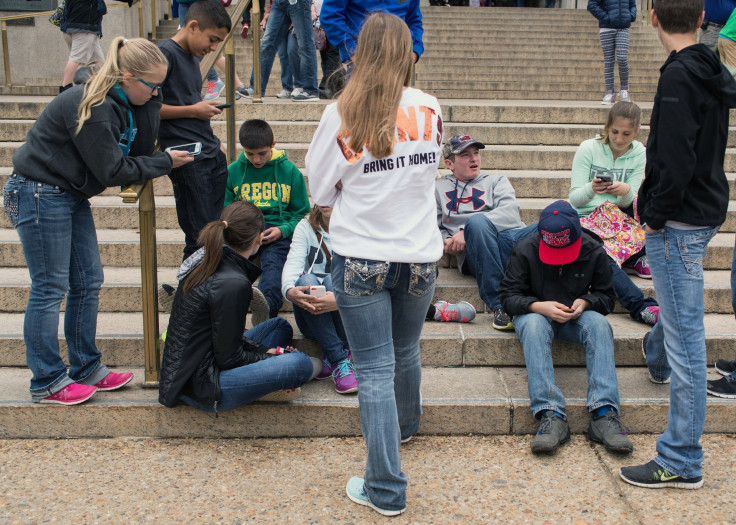Smartphone Addiction Alters Brain Chemistry In Young People For The Worse

Young people who are addicted to smartphones and the internet have an imbalance in their brain chemistry, a study has found. The Pew Research Center study was presented to the Radiological Society of North America (RSNA) on Nov 30.
According to the study, 46 percent of Americans claim that they couldn’t live without their smartphones. Though this might look a bit exaggerated, it’s rather obvious that more number of people are becoming dependent these days on smartphones and other gadgets for chatting, obtaining information, gaming and yes, making calls too. The potential long-term effects of such habits on people, especially youngsters, and also the effects on their brains were matters of curiosity among the scientific community as well as their parents. The present study should satisfy the curiosity, at least to some extent.
As part of the study, Hyung Suk Seo, M.D, a professor of neuroradiology at Seoul’s Korea University and his colleagues used magnetic resonance spectroscopy (MRS) to obtain insights on teen brains addicted to smartphone and internet. Nineteen young people with a mean age of 15.5 (9 of whom were males) who were diagnosed with smartphone or internet addiction and also 19 healthy peers (matched in age and gender with the first group) were involved in the study.
Among the addicted youth, 12 received cognitive behavioral therapy —a modified version of a cognitive therapy program used for treating gaming addiction — for nine weeks (cognitive behavioral therapy or CBT focuses on altering unhealthy patterns of thoughts, beliefs, attitudes etc. Originally conceived as treatment for depression, it’s now used widely for multiple health conditions).
Standardized smartphone and internet addiction tests were used to measure the severity of addiction in the subjects involved in the study. They focused on the extent to which smartphone and internet usage affected their everyday routines, productivity, social life, feelings and sleeping patterns. A higher score would mean a higher level of addiction.
It was found the addicted teens scored really high in impulsiveness, anxiety, depression and insomnia. MRS exams were performed on them both before and after the behavioral therapy. On the control group (those who weren’t addicted) a sole MRS exam was conducted. MRS exams were perfromed on both the groups to measure the levels of glutamate-glutamine (Glx) — a neurotransmitter in the brain that makes neurons more electrically excited, and gamma amniobuytyric acid (GABA) — another neurotransmitter that makes the brain signals slow down. GABA is related to both vision and motor control and also in regulating different brain functions including anxiety.
The MRS results showed that compared to the healthy teens, the GABA to Glx ratio was significantly higher in the anterior cingulate cortex of addicted teens before the therapy. (The anterior cingulate cortex plays key roles in autonomic functions of the body like regulating heart rate and blood pressure. It’s also linked to higher-level functions like decision-making, morality and ethics, emotional and impulse control. In other words, if something’s wrong with it, you are a mess.) A significantly higher level of GABA could have numerous side effects including anxiety and drowsiness.
Though more studies are required to gain an insight on the clinical implications of these findings, Dr. Seo is of the belief that increased GABA levels in the addicted youths’ brains may have links to functional loss of integration and also skewed regulation of processing in the emotional and cognitive neural network. The silver lining to this youth-related study is that the GABA to Glx ratios in the addicted dipped significantly and in some cases, even normalized after cognitive behavioral therapy.
© Copyright IBTimes 2025. All rights reserved.



















